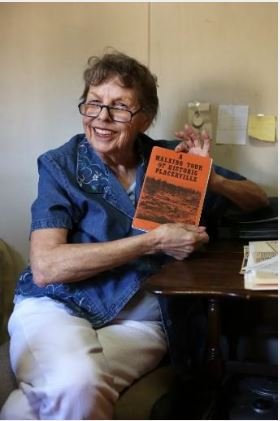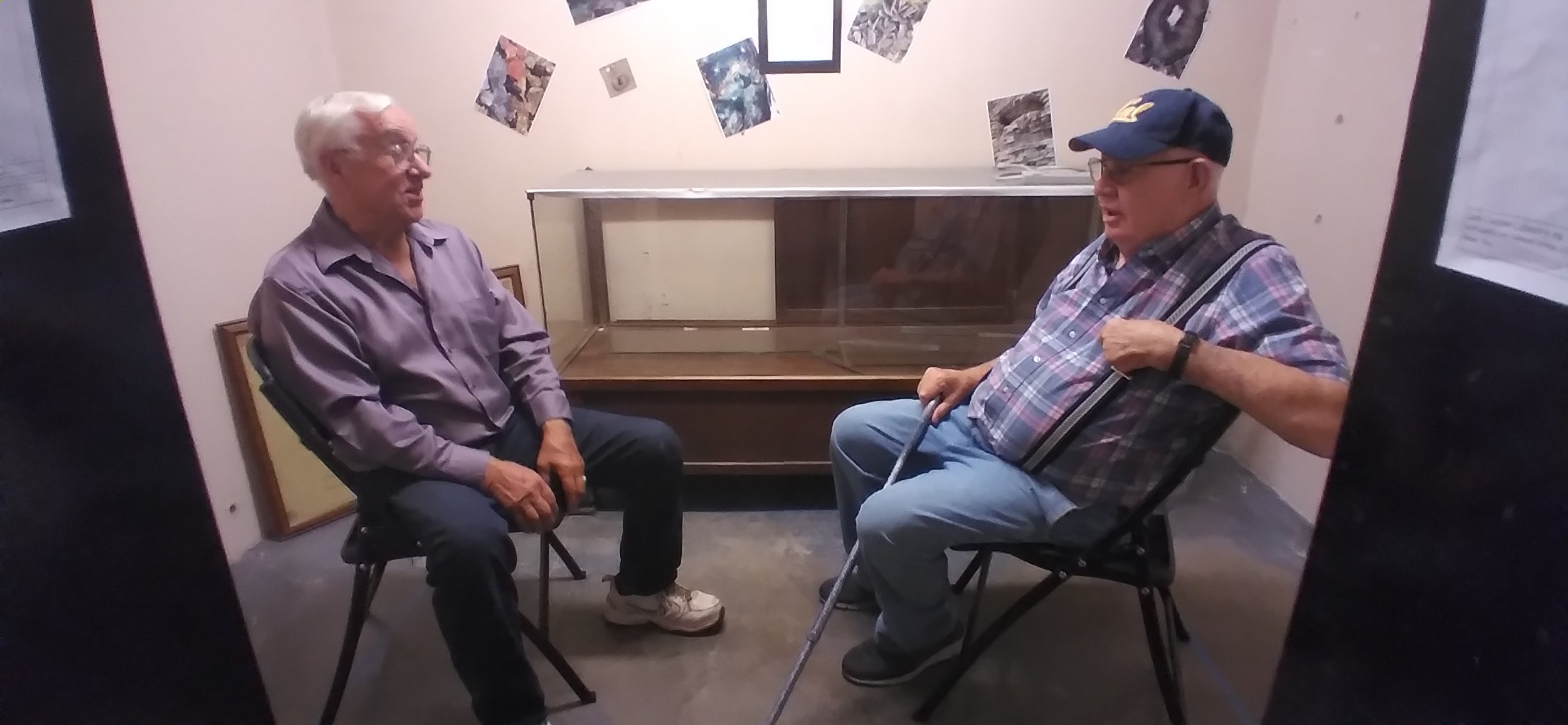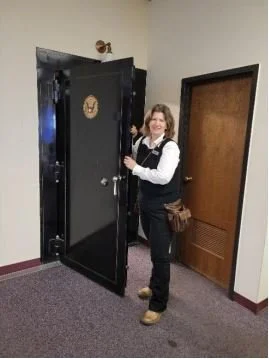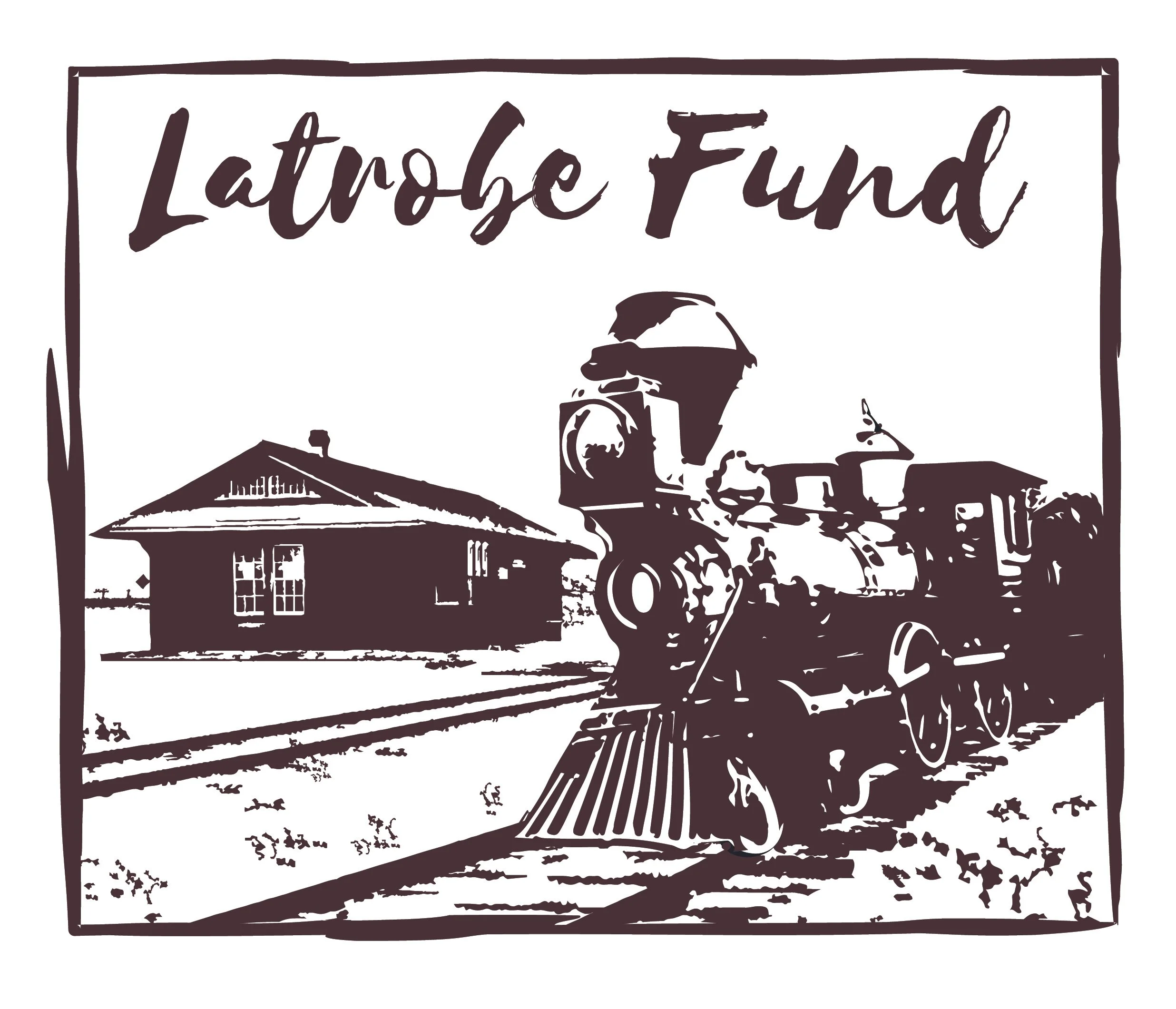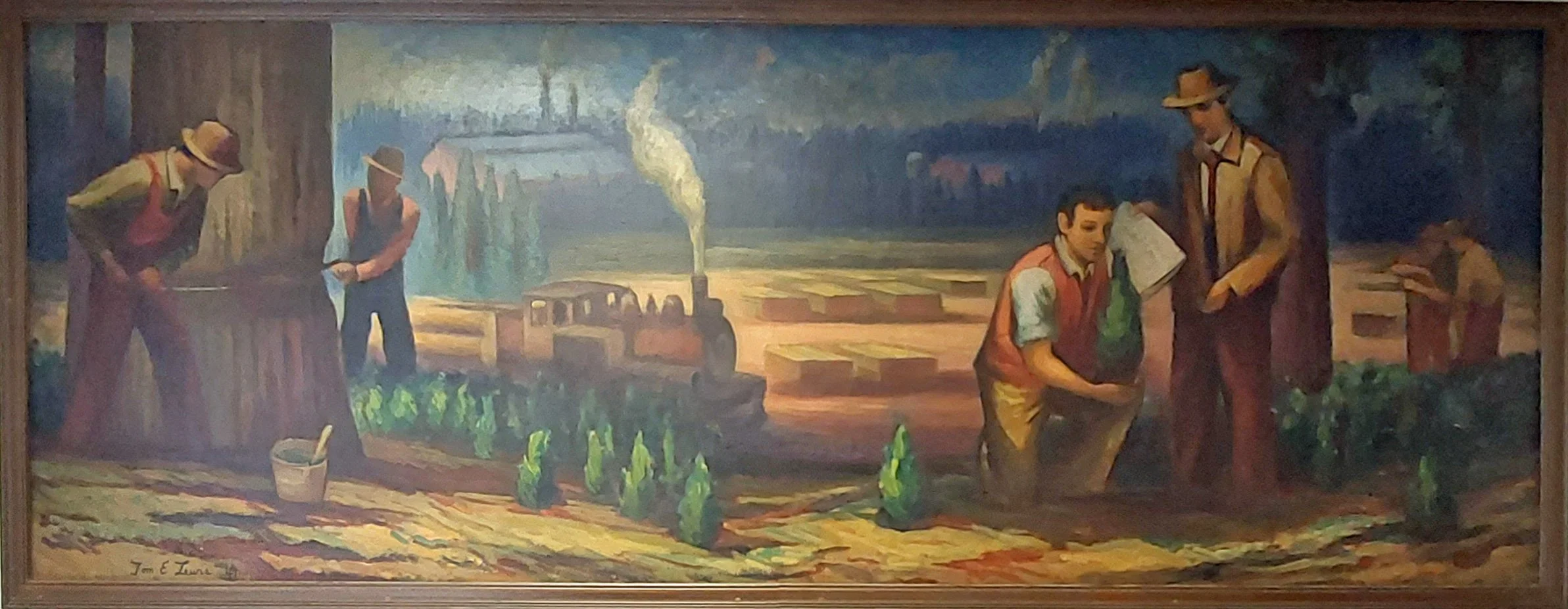Marilyn Ferguson Research Center & Library
Few residents of El Dorado County can be considered oracles of local history during their time. Marilyn Ferguson was one of these few. Though many knew her as the main presence at the little museum on Main Street, the Fountain and Tallman, (where she operated as the independent contractor for the El Dorado County Historical Society keeping the museum open regularly) this was only the retirement portion of her career. Marilyn was fascinated with the history of our Mother Lode area and was involved in the Historical Society beginning in the 1960s. She explored and researched all over the county, often with another well-known historian Geoge Peabody, who compiled a comprehensive book “Our Historical Resources” for the El Dorado County Community Development Department Parks and Recreation Division in 1988. Other Historical anthologies would be published as well. Marilyn was a bit like those books personified.
Marilyn kept expanding her library of historical material, ranging from primary source documents such as maps and letters, photos and architectural plans to books and objects. She shared much with the growing archive section of the county museum and also helped form the Heritage Association, but mostly, her refuge and information repository remained in the upstairs loft of her historic home overlooking Main Street Placerville.
This lifetime collection was donated to El Dorado Gold 1848 by her family after her death in 2022, to form a research room in her honor in the heart of the Gold Rush Town she loved the most; Placerville. Today, the Marilyn Ferguson Research Center and Library at 515 Main Street, includes an ever expanding collection of materials. Volunteer researchers have been organizing, cataloging, filing, digitizing and forming a network with other historical document centers to help share and make accessible this wealth of history to visitors, students, and local citizens.
To request a visit or ask an enquiry, you can contact the Marilyn Ferguson Research Center by email; researchedg1848@gmail.com
George Wheeldon Minerology Exhibit
Fred Ott & George Wheeldon - Inside the Vault
Jill Kearney - Outside the Vault
El Dorado Gold 1848 strives to connect visitors and local citizens with the history of our area in the Mother Lode. People and the individual successes and failures make up a tremendous part of the web of the past, but no one has explained the unique nature of why El Dorado County is called the “Mother Lode” better than George Wheeldon. His teaching about the geology of our area and the pre-history geological reason for the wealth of placer gold found here has educated nearly three generations of students!
Working throughout his life not only as a geology professor but consultant and lecturer, his natural curiosity brought about an equally impressive familiarity with many of those individual stories woven around the successes and failures of the gold rush.
A preservationist on many levels, George recorded and has shared many of these stories and oral history from pioneer families with his college classes, oftentimes arranging field trips to private historical sites and active as well as inactive mines where this history was brought to life in many ways.
El Dorado Gold 1848 is honored to have George endorse the mission and projects of our group and in return, we are excited to have received a grant for our George Wheeldon Minerology Display, that will be a geologic showcase within the historic walk-in safe at 515 Main Street.
George Wheeldon
A 7,000-pound piece of snowflake obsidian found south of the Mono-Inyo craters is one of the treasures George Wheeldon brought back from a field trip. It now sits in his front yard. Created by Mountain Democrat, photo by Mark Studyvin
Thanks to the The Latrobe Fund for its generous Grant of $18,000 so that we can bring the George Wheeldon Minerology Exhibit to life!
“Forest Genetics" mural - Oil on Canvas by Tom E. Lewis (1941)
The Treasury Relief Art Project (TRAP) was created in August 1935 with special funding provided by President Franklin Roosevelt. It operated as a subdivision of the Procurement Division of the U.S. Treasury, which at that time had principal responsibility for federal buildings. TRAP’s purpose was to employ artists in the decoration of federal and other buildings.
Forest Genetics oil on canvas by Tom E. Lewis
Tom E. Lewis - Painter Born in Los Angeles, CA on Feb. 22, 1909. Lewis studied architecture at USC. During the 1930s he had a home at 2260 Midlothian Drive in Pasadena and a studio in Laguna Beach.
A self-taught artist, he worked in oil and watercolor and was partial to the color blue. In 1935 he moved to San Francisco and established a studio on Telegraph Hill. He died there on Aug. 2, 1979.
Most of the post office works of art were funded under the Treasury Department's Section commissions. Those works that were created using TRAP funds are so indicated. Although the WPA funded the construction of post office buildings, the artwork was not WPA but was usually produced under the Section or TRAP programs.
This mural has been restored to the main lobby and general entrance with the removing of the walls added in the 70’s.
Click to read more about TRAP:
https://livingnewdeal.org/glossary/treasury-relief-art-project-trap-1935-1939/
The TRAP program accomplished a number of things:
First, TRAP gave hope and a paycheck to artists struggling through the Great Depression; the number of artists employed by the program peaked at over 350 during the latter half of 1936, and about 75% of them came from the relief rolls.
Second, TRAP beautified “Federal offices and buildings, penal institutions, hospitals, and educational institutions,” with at least 10,000 easel paintings, 89 murals, and 43 sculptures.
Third, it performed educational therapy work at federal prisons.
TRAP art typically illustrated “scenes of historical events and everyday life” and sometimes promoted “New Deal reformist ideas”. Unfortunately, thousands of paintings and other artworks produced under TRAP have been lost or are hidden away in the basements of federal buildings or museums.
But fortunately, after the County of El Dorado received the Historic Post Office they decided trying to move the oil canvas, would be damaging to the mural so they decided to leave it in place and built a frame around and left it where it remains. El Dorado Gold 1848 is committed to leaving the mural in place to continue the legacy of the New Deal by keeping it accessible to the public, as what intended.


